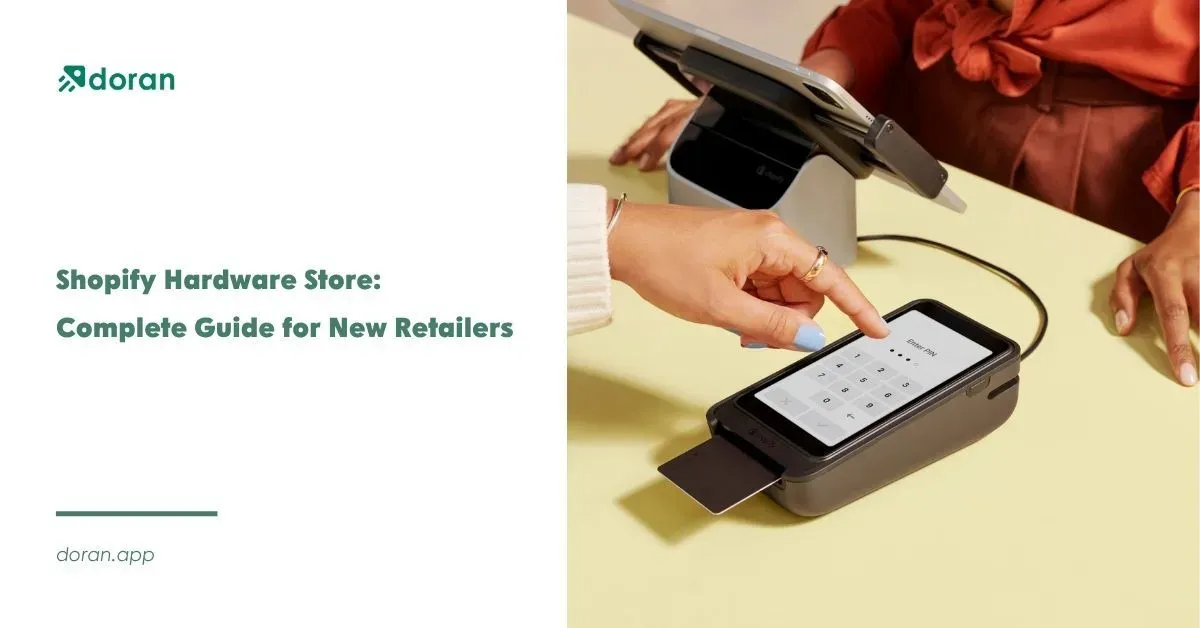Shopify eBay Integration Not Working? Top 6 Troubleshooting Tips
- Order Import Issues and How to Resolve Them
- Pricing or Tax Discrepancies and Fixing Strategies
- Broken or Missing Links in Product Listings
- Incorrect App Configuration and Optimization Tips
- Outdated API or Apps and Update Solutions
- Account Limitations and How to Overcome Them
- Best Practices to Prevent Shopify eBay Integration Problems
Are you struggling to get your Shopify eBay integration to work seamlessly? You’re not alone. Many Shopify users encounter issues while syncing their stores with eBay, leading them to wonder, "Why is my Shopify eBay integration not working?" These problems can disrupt operations, delay orders, and frustrate customers. Fortunately, most of these problems have straightforward solutions. In this article, we’ll walk you through the top troubleshooting tips to fix common integration problems and keep your online business running smoothly.
Order Import Issues and How to Resolve Them
One of the most common complaints from Shopify users is: “Why is my Shopify eBay integration not working when importing orders?” Order import issues are a frequent frustration for merchants integrating Shopify with eBay. These problems can lead to missed orders, delayed processing times, and overall inefficiency in operations. Here’s a comprehensive look at the causes and solutions for these errors.
1.1 Identify Common Causes of Order Import Errors
Order import errors can arise from several key factors, including:
Mismatched product SKUs: According to the Shopify Community, when the SKU on Shopify doesn’t match the SKU on eBay, orders fail to sync properly. This often happens if the same product is listed with different variations or if SKUs are updated inconsistently across platforms.
Connection interruptions: Temporary disruptions in the connection between Shopify and eBay can cause orders to get stuck. These can occur due to server outages, network instability, or incorrect credentials.
Incorrect settings: Misconfigured app settings, such as syncing orders only from specific eBay regions or disabling certain product categories, can block imports. Overly restrictive filters or unchecked default options often contribute to these issues.
Inventory mismatches: If inventory levels on Shopify do not match those on eBay, the integration may fail to import orders for out-of-stock items, even if they are available on one platform.
Understanding these causes helps merchants identify why their Shopify eBay integration is not working and allows them to apply targeted fixes.
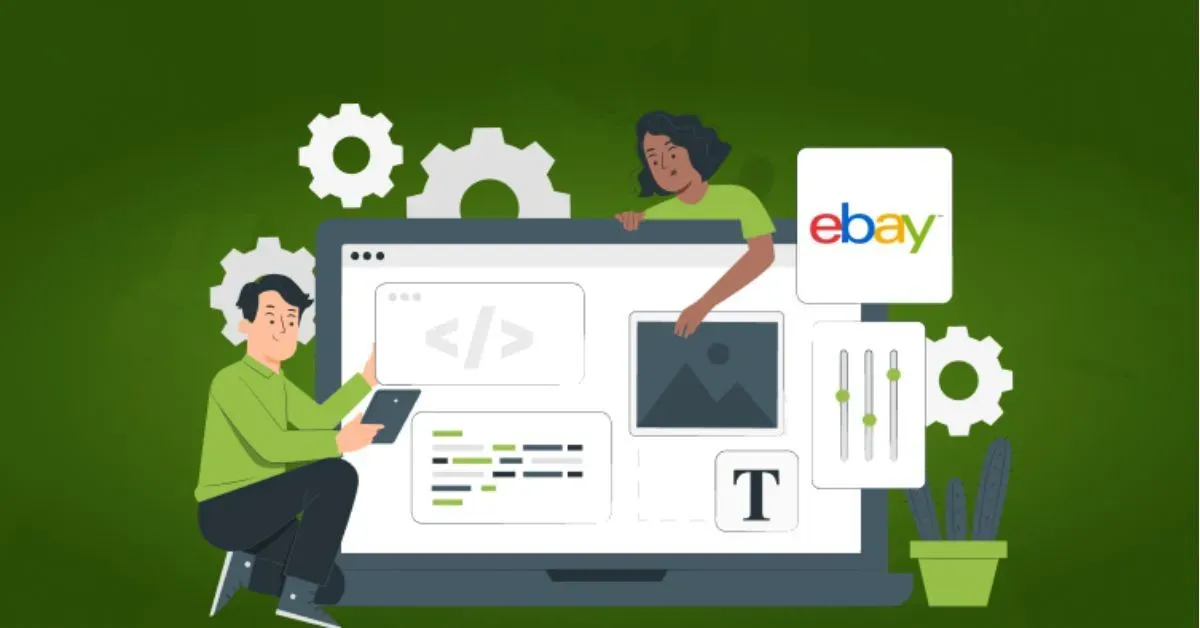
1.2 Solutions for Fixing Order Import Issues
Here are steps to resolve order import problems:
Step 1: Match SKUs
Ensure that your product SKUs on Shopify and eBay are identical. Double-check any variations in product attributes. If you have multiple variations or complex product structures, consider using an automated SKU-matching tool to ensure alignment.
Step 2: Check Synchronization Settings
Verify that all regions, categories, and products are correctly configured in the app. Pay special attention to filters or rules that might exclude certain products or regions unintentionally.
Step 3: Retry Failed Imports
Use the integration app’s tools to manually retry importing stuck orders. Many apps provide detailed error logs, which can guide you in identifying the specific cause of the failure.
Step 4: Reconnect the App
If nothing works, disconnect and reconnect your Shopify-eBay app to reset the connection. Before doing this, ensure you’ve saved your settings and backed up any critical data.
Step 5: Check Error Logs
Review the app’s error logs for more detailed insights into what might be causing the order import issues. Often, these logs highlight specific problems, like mismatched fields or missing data.
Step 6: Contact Support
If all else fails, reach out to the integration app’s support team. Provide them with as much information as possible, including error logs and examples of failed imports, to expedite the troubleshooting process.
By following these steps, you’ll not only resolve current order import issues but also create a more reliable integration setup for the future.
Pricing or Tax Discrepancies and Fixing Strategies
Another common issue that causes merchants to ask, “Why is my Shopify eBay integration not working?” involves pricing or tax discrepancies. These inconsistencies can confuse customers, disrupt checkout processes, and harm your store’s reputation. Let’s explore why these issues occur and how you can fix them.
2.1 Why Pricing or Tax Discrepancies Occur
These issues often arise due to:
Currency mismatches: Shopify and eBay operate in different currencies, and conversion errors may occur. For example, a merchant noted that Shopify prices in USD were incorrectly converted to GBP on eBay due to manual errors.
Incorrect tax configurations: Taxes on Shopify might not match the rates set on eBay.
Price rounding differences: Shopify and eBay may calculate prices differently, leading to slight mismatches.
Discount misalignment: Promotions or discounts applied on Shopify might not be accurately reflected on eBay listings.
Manual overrides: Adjustments made manually to pricing on one platform may not sync properly with the other.

2.2 Tips to Resolve and Prevent Discrepancies
To tackle pricing and tax discrepancies:
Standardize currency settings: Ensure both platforms use the same base currency and enable automatic currency conversion if needed.
Align tax rates: Match tax settings between Shopify and eBay, taking regional regulations into account.
Enable price syncing: Use your integration app’s feature to synchronize pricing across platforms.
Test with sample products: Regularly check a few listings to ensure pricing and taxes are consistent.
Broken or Missing Links in Product Listings
Issues like broken or missing links in product listings often lead merchants to wonder why their Shopify eBay integration is not working. This problem directly impacts product visibility, making it harder for customers to find your items on eBay. Understanding the root causes is key to resolving the issue effectively.
3.1 Causes of Broken or Missing Links
Several factors can result in broken or missing links between Shopify and eBay. Below are the most common causes:
Deleted or Renamed Products: If you delete or rename a product on Shopify, the associated eBay listing may lose its connection. For example, a merchant shared on Shopify forums that renaming product variations (like changing "Red Shirt" to "Crimson Shirt") broke the link, causing the product to disappear from eBay listings. This typically happens because the integration app relies on consistent product identifiers, such as SKUs or product titles, to sync listings.
Incorrect Mapping: Mapping errors occur when the integration app fails to associate Shopify products with their corresponding eBay listings. For instance, if a product ID or SKU is changed manually on one platform, the mapping may break, preventing updates like inventory or pricing changes from syncing properly.
Category Mismatches: Misaligned product categories can also disrupt synchronization. eBay often requires specific categories for listings, while Shopify allows more flexibility. If a product’s category on Shopify doesn’t match eBay’s predefined options, the link may break, resulting in missing listings. For example, listing an electronic item under "Accessories" on Shopify instead of "Electronics" can cause issues.
Partial Listings or Missing Details: Incomplete product information on Shopify, such as missing images or descriptions, can lead to errors during syncing. eBay often requires additional details like shipping policies or condition specifications, which, if absent, can cause the product to fail during synchronization.
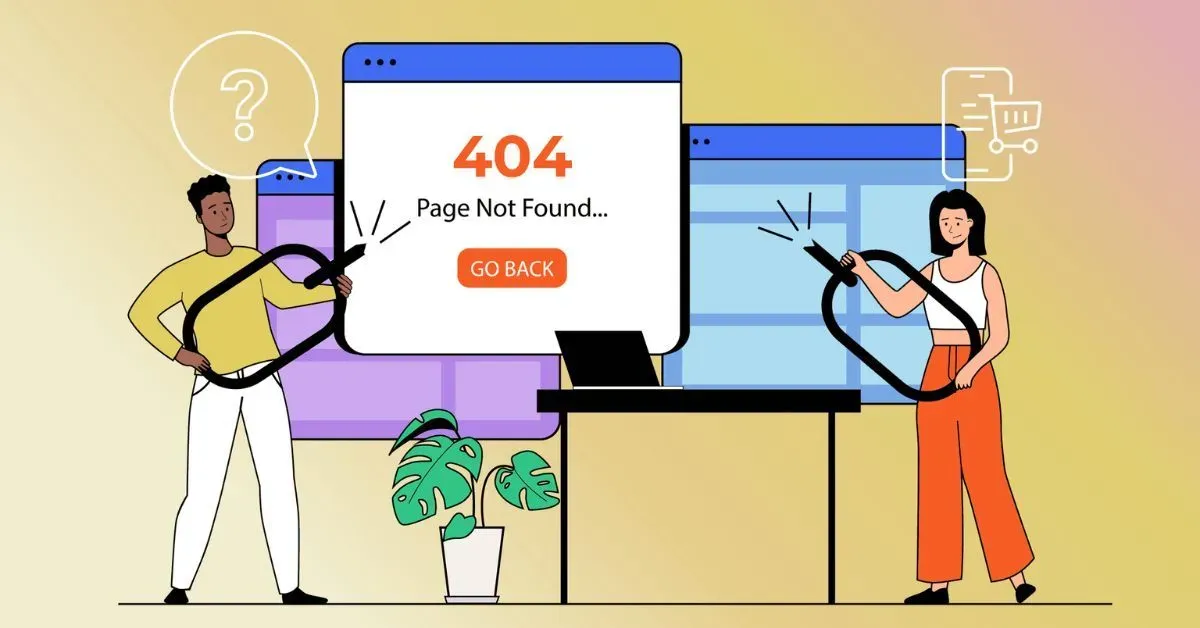
3.2 How to Reconnect and Repair Missing Links
Fixing broken or missing links involves careful auditing and using integration tools effectively. Here’s a step-by-step guide to resolving this issue:
Audit Your Product List: Start by comparing your Shopify product catalog with your eBay listings. Look for discrepancies such as products missing on eBay, mismatched inventory levels, or outdated product details. Use tools like Excel or Google Sheets to create a side-by-side comparison of SKUs, titles, and inventory counts.
Manually Relink Products: Many integration apps, such as Codisto, Sellbrite, or eBay Link, offer mapping tools to manually relink Shopify products to their corresponding eBay listings. Use these tools to reconnect products with broken links. For instance, if a product’s SKU has been updated, you can re-map it within the app by selecting the correct listing on eBay.
Update Categories: Ensure that your product categories are consistent between Shopify and eBay. For example, if you sell fashion products, confirm that Shopify’s “Clothing” category corresponds to eBay’s predefined “Fashion” or “Apparel” categories. Many apps allow you to set default category mappings to avoid these mismatches.
Re-list Affected Products: If a product cannot be relinked, re-list it entirely on eBay. This process involves creating a fresh eBay listing for the product from Shopify, ensuring all required details (title, SKU, images, category, and pricing) are accurate. This step is particularly useful for products that have been deleted or where the original link cannot be restored. Make sure to test the new listing by checking if it appears on eBay’s search results.
Verify Integration Settings: Double-check your integration app’s synchronization settings to prevent future issues. For instance:
Confirm that the app is set to automatically sync changes made on Shopify to eBay.
Adjust settings to ensure any renamed or updated products are detected and re-linked.
Fix Missing Product Details: Review product descriptions, images, and shipping policies on Shopify to ensure they meet eBay’s listing requirements. For example, eBay often requires high-resolution images and detailed descriptions to meet its standards for visibility and compliance.
Monitor Logs and Errors: Most integration apps provide logs or error reports that detail why a particular product failed to sync. Use these logs to identify and address specific issues, such as missing fields or invalid product data.
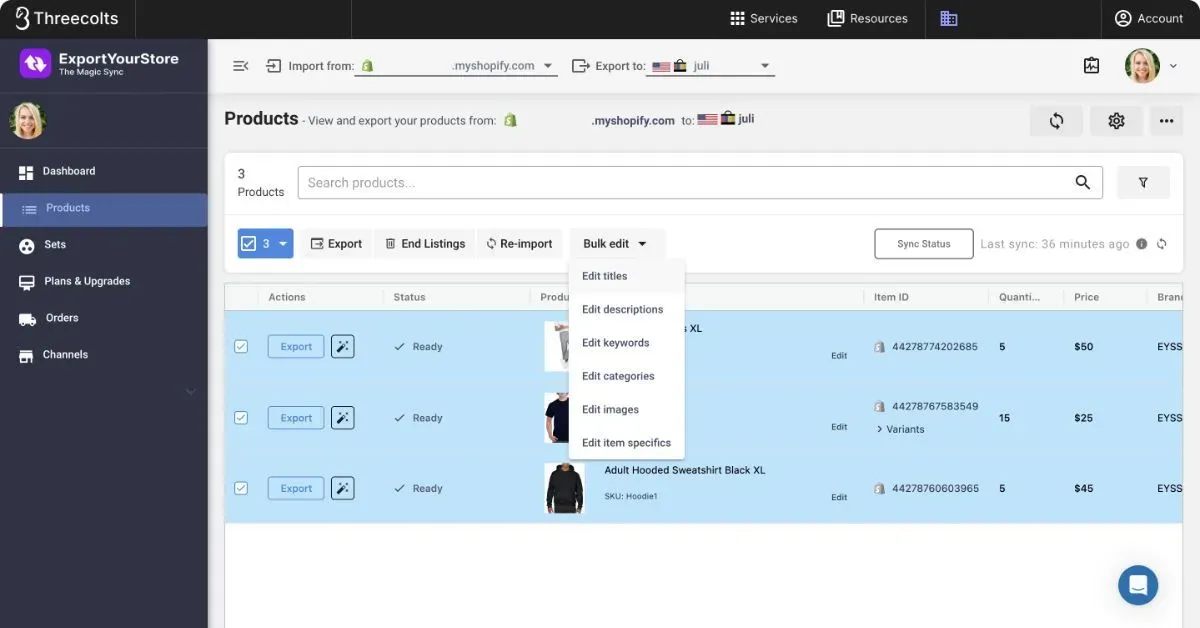
Incorrect App Configuration and Optimization Tips
App configuration plays a crucial role in the success of your Shopify eBay integration. Misconfigurations can cause a variety of issues.
4.1 Recognizing Incorrect App Configurations
Look out for these signs:
Products fail to sync automatically.
Orders are not imported as expected.
Inventory levels are mismatched between platforms.
4.2 Tips to Optimize Your App Configuration
Follow these actionable steps to ensure your Shopify eBay integration works effectively:
Review Integration Settings Regularly: Take time to review your app’s core settings, including options for product sync, order imports, and inventory management. Check for any misconfigured filters, such as restricted product categories or region-specific settings that could block syncing.
Enable Automatic Syncing: Set your app to sync data automatically at regular intervals. This ensures real-time updates for inventory, pricing, and order statuses, reducing manual intervention and potential errors.
Define Clear Syncing Rules: Establish rules for managing duplicate products, handling out-of-stock items, and mapping SKUs. For example, configure the app to automatically mark out-of-stock items as unavailable on eBay to avoid customer complaints.
Test the Configuration Before Full Deployment: Use a small batch of products to test your settings. For instance, update inventory or pricing on Shopify and confirm the changes are accurately reflected on eBay. Testing ensures your configuration works as intended and helps identify potential errors before scaling up.
Leverage Error Logs and Reports: Most integration apps provide error logs or detailed reports on failed syncs. Regularly check these logs for specific issues like mismatched SKUs or missing product attributes, and address them promptly.
Stay Updated on App Features: Integration apps often release updates that include new features or fixes for known issues. Enable automatic updates or check for them manually to keep your app running smoothly with the latest improvements.
By implementing these tips, you can avoid the headaches caused by misconfigurations and ensure your Shopify eBay integration is optimized for success.
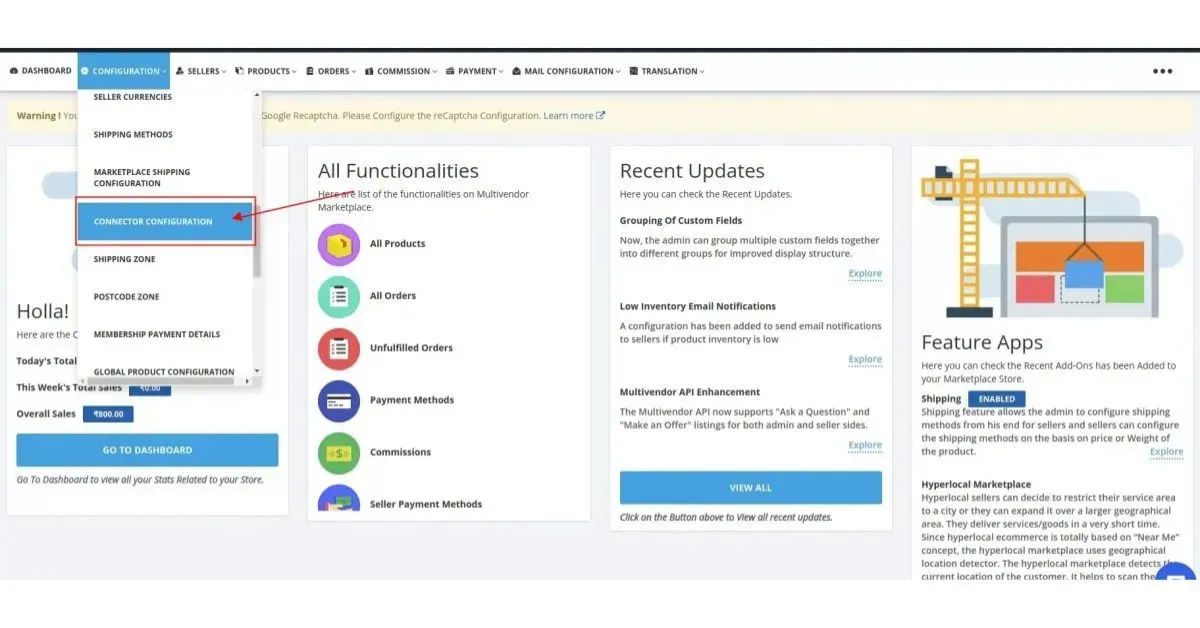
Outdated API or Apps and Update Solutions
Relying on outdated APIs or apps can create major integration issues and limit essential functionality. Keeping your tools updated is essential for a smooth and secure integration experience.
5.1 Risks of Using Outdated APIs or Apps
Some risks include:
Lack of support for new features: Outdated apps may not support new functionalities introduced by Shopify or eBay, which could limit your business's ability to scale.
Increased risk of bugs and errors: Older versions are more likely to encounter glitches or synchronization errors, which can disrupt operations.
Security vulnerabilities: Using outdated APIs or apps exposes your system to potential security threats, including data breaches or unauthorized access.
Decreased compatibility: As Shopify and eBay update their platforms, older apps may lose compatibility, causing significant disruptions.

5.2 How to Keep Your Integration Up-to-Date
Step 1: Subscribe to Developer Updates
Join Shopify and eBay developer communities or mailing lists to stay informed about upcoming changes, feature releases, and deprecations. This helps you anticipate and prepare for required updates.
Step 2: Test Updates Before Full Deployment
Before rolling out updates across your entire system, test them in a controlled environment. This ensures compatibility and identifies potential issues before they affect live operations.
Step3: Audit Third-Party Apps
If you use third-party app, verify that they are compatible with the latest Shopify and eBay updates. Outdated third-party apps can create unexpected conflicts even if your main integration app is up-to-date.
Step4: Partner with Reliable Developers
Work with integration app providers who offer strong support and regular updates. Reliable developers typically provide clear documentation, responsive support, and a track record of maintaining compatibility.
By staying proactive with updates and monitoring, you can prevent outdated APIs or apps from becoming a bottleneck for your business.
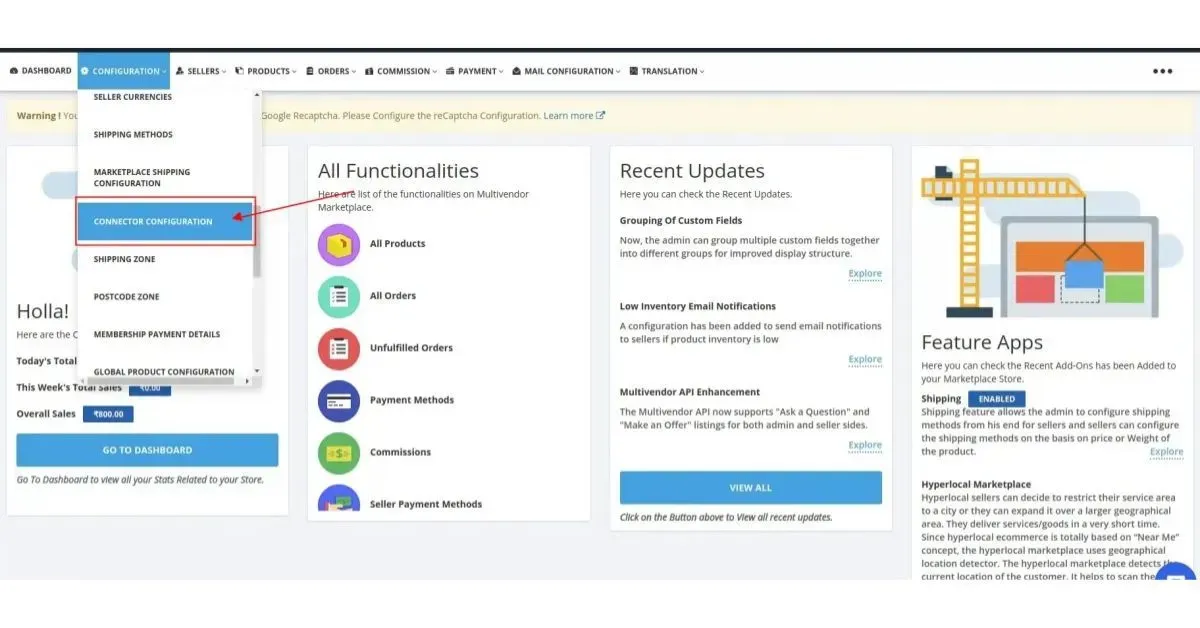
Account Limitations and How to Overcome Them
Account limitations can prevent successful integration and impact your business operations.
6.1 Common Account Restrictions That Cause Issues
Account restrictions can significantly impact your ability to integrate Shopify with eBay seamlessly. Here are some common limitations:
eBay Selling Limits: eBay imposes selling limits based on your account age, performance metrics, and feedback ratings. These limits restrict the number of items or total sales value you can list or sell.
Shopify Plan Caps: Shopify plans have varying limits on the number of products, orders, and features. For example, basic plans may not support extensive integrations or high-volume sales.
Regional Restrictions: Some products or services may be restricted in specific regions due to local laws, regulations, or eBay policies. These restrictions can prevent listings from appearing in certain markets.
Payment Hold Policies: New or underperforming eBay sellers may face payment holds, delaying access to funds until orders are fulfilled and confirmed by buyers.
Shipping Limitations: eBay’s shipping policies or integration app settings might restrict certain shipping methods, leading to order syncing issues.
Category-Specific Requirements: Certain eBay categories, such as electronics or health products, may require additional verification or specific listing details that aren’t automatically synced from Shopify.
Understanding these restrictions can help you proactively address potential roadblocks and optimize your Shopify-eBay integration.
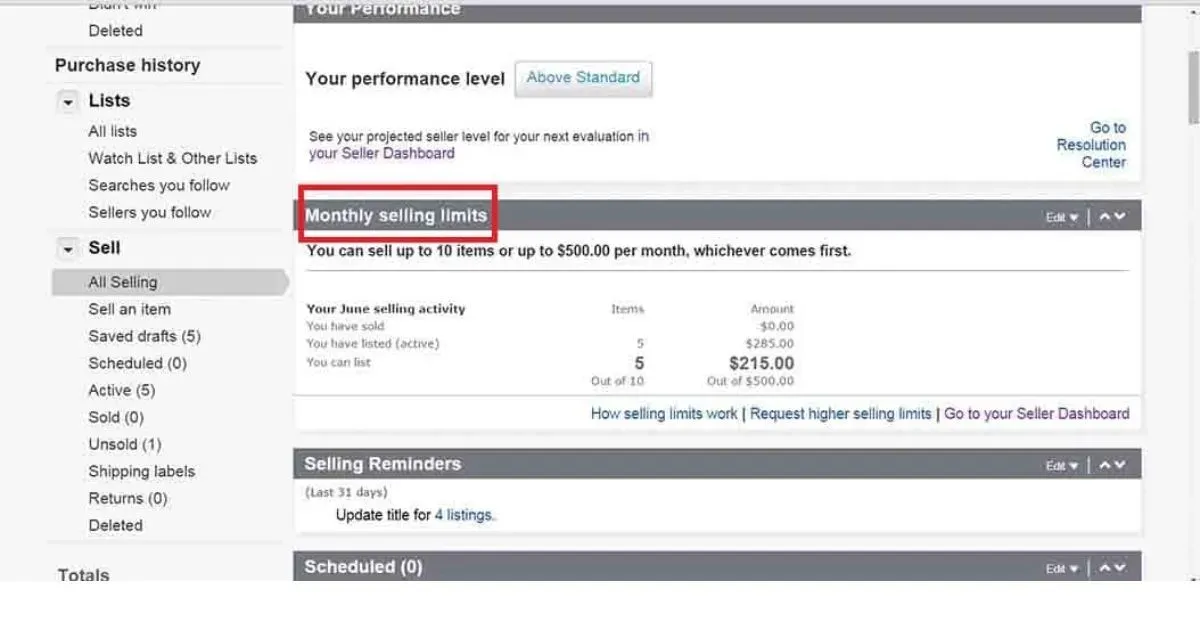
6.2 Steps to Monitor and Resolve Account Limitations
Here’s how to address these challenges:
Step 1: Check Selling Limits
Log into your eBay account to view your selling limits. Review metrics like item caps and dollar thresholds. To increase these limits, maintain a high seller performance rating by ensuring fast shipping, accurate product descriptions, and excellent customer service.
Step 2: Expand Shopify Plans
If you’ve hit product or order caps on Shopify, evaluate your current plan and consider upgrading. Shopify plans vary in features and limits, so choose one that accommodates your growing business needs. Analyze metrics like monthly sales volume to justify the cost of an upgrade.
Step 3: Resolve Regional Restrictions
Ensure you’re compliant with eBay’s regional selling policies. Verify that your products meet specific regulations or standards for targeted regions. For instance, confirm shipping options, tax requirements, and legal obligations when selling internationally.
Step 4: Monitor Account Health
Regularly check your eBay account health dashboard. This includes monitoring seller ratings, feedback scores, and return or dispute rates. Take immediate corrective action if any metrics fall into warning zones to avoid account limitations.
Step 5: Contact Support for Assistance
If you encounter persistent limitations, reach out to eBay or Shopify support for guidance. Provide detailed information about the issue, including screenshots or reports, to expedite resolution. In some cases, you may qualify for account-specific exceptions.
Step 6: Use Tools to Track Limitations
Leverage third-party tools or Shopify-eBay integration app features to track account metrics, selling limits, and inventory levels. These tools can automate monitoring and send alerts when approaching critical thresholds.
By following these steps, you can effectively monitor and resolve account limitations, ensuring smooth operations and uninterrupted sales across both platforms.
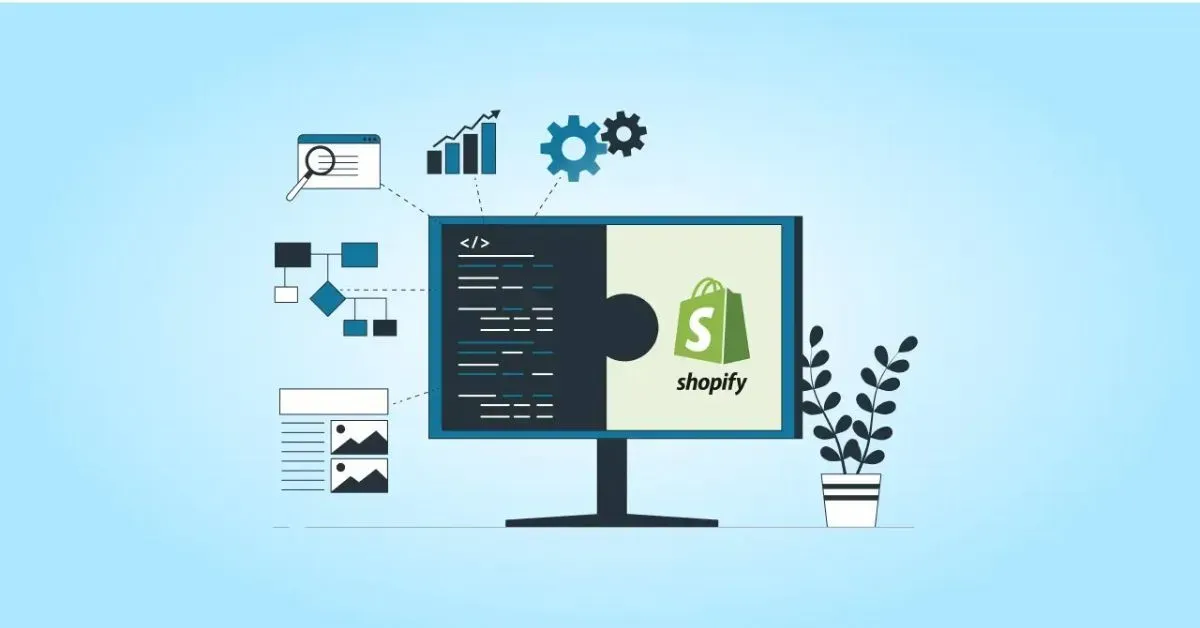
Best Practices to Prevent Shopify eBay Integration Problems
Preventative maintenance is key to avoiding integration headaches. Follow these best practices:
7.1 Perform Regular Updates and Maintenance
Review integration logs: Periodically check logs for errors, warnings, or skipped syncs. These logs can provide early indicators of potential problems.
Monitor server and API status: Keep an eye on Shopify and eBay server statuses. If either platform experiences downtime, sync errors could occur.
7.2 Schedule Periodic Sync Checks
Set a regular sync schedule: Dedicate time weekly or bi-weekly to verify that products, inventory levels, and orders are syncing correctly.
Use test cases: Perform spot checks by creating sample orders or updating inventory to ensure changes are reflected on both platforms.
Audit product data: Regularly review your product catalog to ensure SKU consistency, pricing accuracy, and up-to-date tax settings.
7.3 Maintain Training and Documentation for Staff
Train your team: Provide thorough training for your staff on how to use the integration app. Include tutorials on troubleshooting common errors, updating configurations, and interpreting error logs.
Create a troubleshooting guide: Document solutions for frequent issues like order import failures, pricing mismatches, or missing listings.
Keep resources updated: As platforms and tools evolve, ensure your training materials and documentation reflect the latest practices.
7.4 Proactively Monitor System Health
Enable notifications: Many integration apps allow you to set up alerts for failed syncs, order import errors, or other critical issues.
Monitor performance metrics: Track key metrics such as sync times, order processing delays, and inventory update frequency to identify areas for improvement.
Engage in regular evaluations: Periodically assess whether the integration app meets your business needs or if a more advanced solution is available.
By implementing these best practices, you can minimize integration issues and ensure a seamless experience for your business and customers.

While Shopify eBay integration issues can feel overwhelming, most of them have straightforward solutions you can implement quickly. If you’ve ever wondered, “Why is my Shopify eBay integration not working?”, this guide provides actionable troubleshooting tips and best practices to address common problems.
By following these strategies, you can resolve syncing issues, streamline operations, and ensure your integration runs smoothly. Remember, regular updates, proper configuration, and ongoing maintenance are essential to a seamless Shopify-eBay connection. Keep your tools up-to-date, and you’ll be well on your way to maximizing sales across both platforms.

Hey! I'm Andrew Doan. Together, we'll build the foundation for a successful store and ensure it thrives! Let grow together!
Start Building Trust Today
Install the Product Reviews app to improve your store's credibility and boost sales with real customer reviews.
Get Started with Zero CostWhat to not miss out on our blog
Gain insightful knowledge and invaluable experiences from dedicated experts.

30 Shopify Top Sellers & Secrets Behind Their E-commerce Success
Explore Shopify top sellers setting new standards in online retail. Let's find out how they attract buyers, scale sales, and build trusted global brands.

Newsletter
Get all the stories you need-to-know from the most powerful name in news delivered first thing every morning to your inbox

